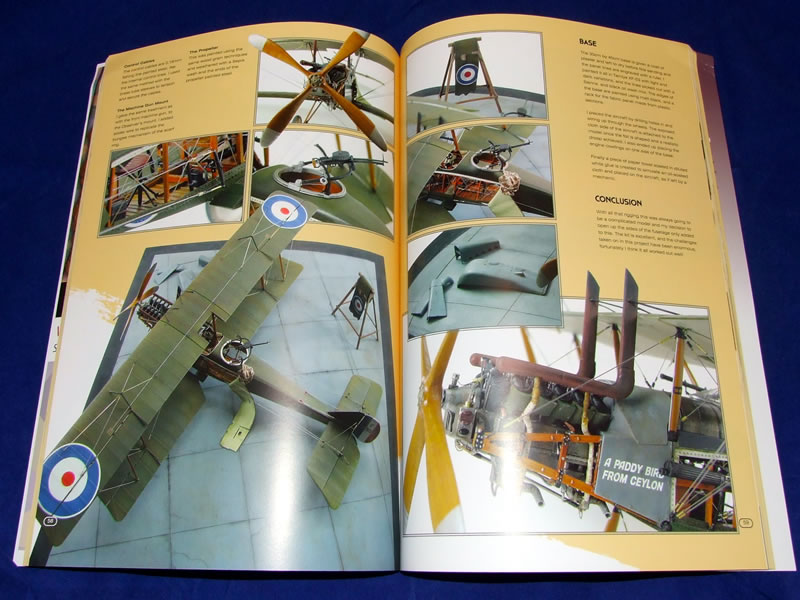AFV Modeller | Air Modeller's Guide to Wingnut Wings Volume 1
Reviewed by Kevin Futter

By now New Zealand model manufacturer Wingnut Wings must surely be a household name among large scale aircraft modellers and fans of World War One aviation alike. Such is the popularity of its kits that British publisher AIR Modeller has seen fit to produce a modeller's guide to building these amazing kits.
Many of the modellers drawn to Wingnut Wings' kits are often new to the challenges of building World War One aircraft models, and this guide sets out to ease that transition, providing the neophyte with some insight into the approaches and tools required to get the most out of these kits.
The format employed is that of a series of build guides by various modellers, each focusing on a specific kit. I'm a little disappointed that there is no table of contents at the beginning of the volume, as this would provide a nice overview of the contents, and help locate specific articles more quickly.
Speaking of which, these articles are as follows:
- Hansa Brandenburg by Daniel Zamarbide Suarez
- SE5 RAF by Richard Camoin
- Roland D.IVA [sic] by Emmanuel Pernes
- RE8 'Harry Tate' by Jose Maria Martinez Fernandez
- Albatros D.VA by David Parker
- Sopwith Pup by John Korellis
- Gotha G.IV by David Parker
- Hints & Tips - Rigging
- Hints & Tips - Wood Grain
Together these span 112 pages. Each model is a masterwork in its own right, and if nothing else, should serve as tremendous inspiration to even the most jaded old hand. They layout is clean and relatively easy to follow, and is in the familiar style of the regular AIR Modeller magazine. As can be see in the following two images of the contents, the photography is universally excellent:


Specific points about the build process are addressed in the text where relevant, and the hints and tips flow from the page like manna from Heaven. There are a few typos scattered about, the most egregious of which is labelling the third article as "Roland D.IVA", when it should in fact be "Roland D.V1A". While this last one should have been caught prior to going to print, the others are probably the natural outcome of a publication being created by professional modellers rather than professional editors, and in no way detract from the terrific content.
The last two Hints & Tips articles on Rigging and Wood Grain are especially valuable, with clear instructions supported by quality photography. Each covers the various materials and techniques available to the modeller to achieve the desired result. Personally I can't wait to put some of these ideas into practise.
Conclusion
Overall this is an excellent publication, with inspirational models, clear instructions and stunning photography. It's highly recommended, and I look forward to Volume 2.
With thanks to AIR Modeller for the review sample.
© Kevin Futter 2013
This review was published on Friday, July 05 2013; Last modified on Thursday, December 07 2017
